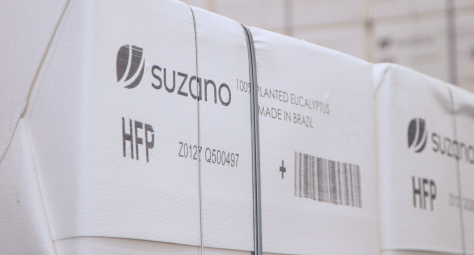sobre o que você deseja falar?


perguntas, sugestões ou problemas técnicos envolvendo a plataforma

informações sobre a empresa




Dimensão SASB
Water ManagementCódigo SASB
RR-PP-140a.2Código SASB
RT-CP-140a.2Setor SASB
Pulp & Paper ProductsSetor SASB
Containers and PackagingDimensão GRI
EnvironmentalCódigo GRI
303-1Urgent efforts are needed to reduce the risks of water scarcity in river basins, a situation exacerbated by climate change. Suzano's eucalyptus plantations, native forests, and mills are directly dependent on water. Therefore, it is essential to understand, systematize, improve, and expand water management practices in agriculture, industry, and the surrounding areas of our operations.
The following risks related to water management at Suzano have been identified: the lack of water in forest management units and factories; the potential shortage of wood from both our own plantations and those of our partners; the possibility of social conflicts arising from overlapping water usage; and the risk of penalties from applicable certification mechanisms related to the company's activities.
Rain is the primary source of water for Suzano's forestry production. Rainfall is seasonal, meaning it occurs less frequently during certain months of the year, resulting in periods of drought that depend on the local climate. In most of the company's regions, these water deficit periods occur between June and September and can be exacerbated by cyclical weather phenomena such as El Niño and La Niña, as well as the impacts of climate change. During these times, social conflicts over competing water use tend to increase.
To evaluate the impact of weather on forest productivity and water resources, Suzano operates a network of 72 proprietary weather stations and incorporates data from 95 public stations in its analyses. Additionally, we integrate remote sensing data with information from both conventional and automated weather stations. An example of this integration is the MERGE (CPTEC/INPE) product, which provides daily precipitation data by correcting satellite images using field data. We also have six flow towers equipped with instruments that monitor water and carbon balance at a high frequency.
To enhance understanding of forest stewardship regarding water resources, the company operates 15 experimental watersheds equipped with sensors. These watersheds are designed to deepen our comprehension of the relationships and impacts of forest management practices in areas that are representative of our production model across all forestry units. Additionally, water quality analyses are conducted in the micro-basins to assess the effects of forestry operations.
Suzano has made a Commitment to Renew Life (CPRV) to enhance water availability in all critical river basins¹ by the year 2030. The company aims to proactively implement local measures to mitigate or transform potential water scarcity events. This initiative also reinforces Suzano's position as a leader in "innovability"—the integration of innovation and sustainability in the management of forestry resources.
Through a comprehensive hydrological modeling study conducted across all basins in its operational areas, the company identified priority recovery actions for those areas assessed as critical. This prioritization was based on the balance between water supply and demand, the level of land use in Suzano's regions, and the vulnerability of local communities. Expected outcomes from these actions include increased water availability in critical watersheds, reduced social conflicts, and fewer losses in forest productivity.
An essential commitment of CPRV is to reduce the water used in industrial operations by 15% by 2030. This goal builds on the existing practices of Suzano's industrial units, which already adhere to the standards set by the Integrated Pollution Prevention and Control (IPPC) and the International Finance Corporation (IFC). The objective is to enhance the performance of our operations and achieve a significant reduction in the amount of water drawn for industrial processes.
Additionally, in 2024, we expanded our meteorological network in the areas where we operate, as well as our water monitoring network through the implementation of experimental micro-watersheds.
Note: